While waiting for spring bird migration to pick up, I have been enjoying the local reptiles and amphibians. Here are a few highlights.


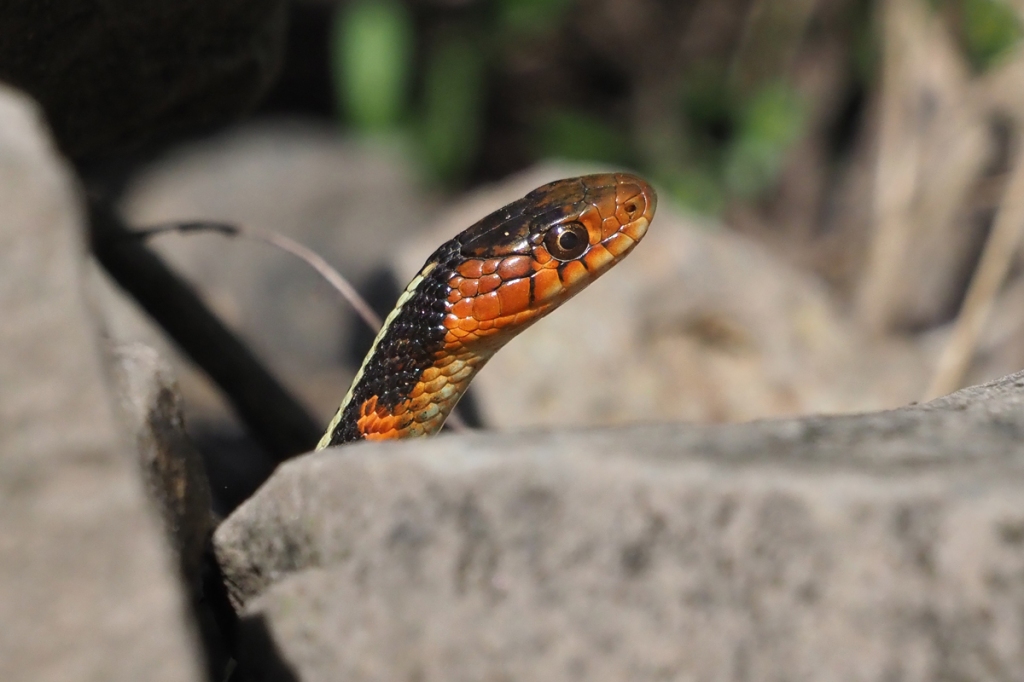


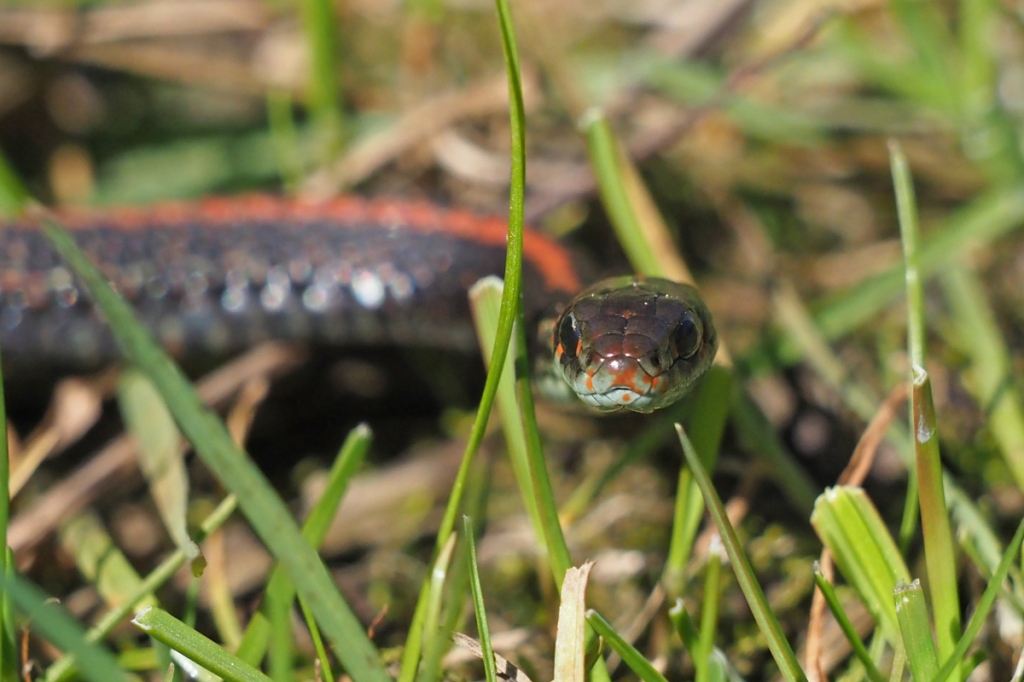
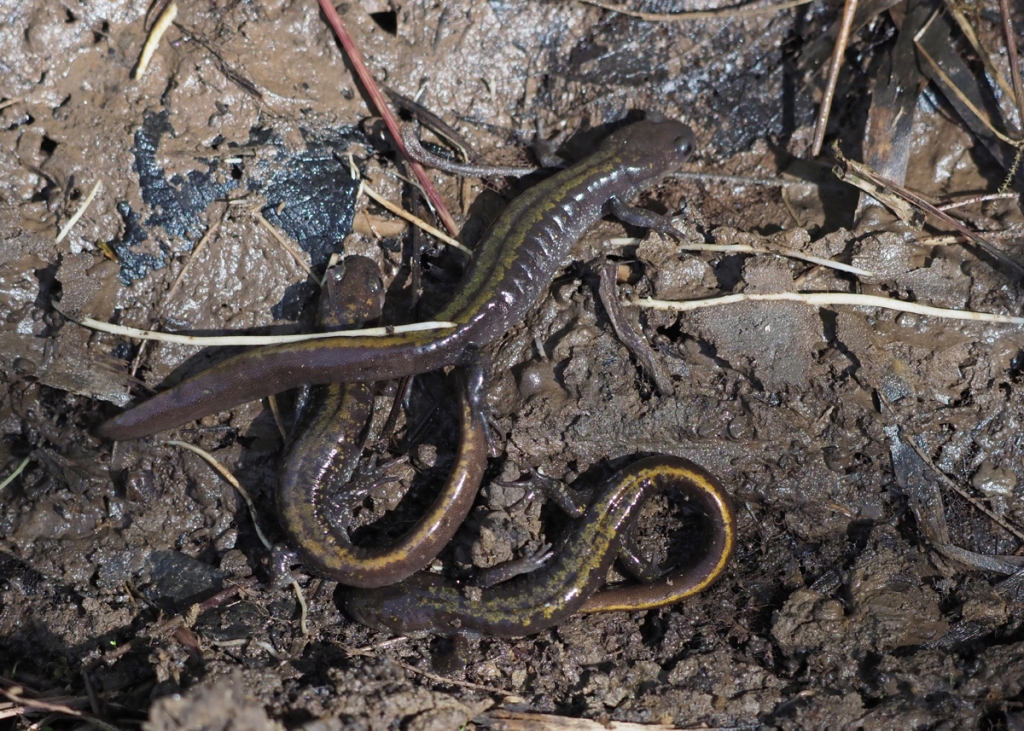



Birding will be heating up in the next week, so I will have to start looking up again.
Happy Spring

While waiting for spring bird migration to pick up, I have been enjoying the local reptiles and amphibians. Here are a few highlights.










Birding will be heating up in the next week, so I will have to start looking up again.
Happy Spring
Here are a few images of various animals I have seen lately. When the birds refuse to pose for photos, it is nice to find other creatures that are more cooperative. As I have said, there is always something to see.
 Brush Rabbit, Fernhill Wetlands
Brush Rabbit, Fernhill Wetlands

 The top image shows a massive male American Bullfrog found at Dober Reservoir. Note the injury around his right eye. The bottom image is of a newly emerged female. At this stage, she was about the size of the males head, but females typically grow larger than males of this species.
The top image shows a massive male American Bullfrog found at Dober Reservoir. Note the injury around his right eye. The bottom image is of a newly emerged female. At this stage, she was about the size of the males head, but females typically grow larger than males of this species.
 Orange Sulphur, found at Jackson Bottom. Unfortunately, this species perches with their wings closed, so you can’t see the vibrant colors on the top.
Orange Sulphur, found at Jackson Bottom. Unfortunately, this species perches with their wings closed, so you can’t see the vibrant colors on the top.
 This Mylitta Crescent at Fernhill Wetlands was much more cooperative.
This Mylitta Crescent at Fernhill Wetlands was much more cooperative.
 I don’t know the dragonflies, but I am told this individual from Fernhill Wetlands is a Striped Meadowhawk.
I don’t know the dragonflies, but I am told this individual from Fernhill Wetlands is a Striped Meadowhawk.
 California Ground Squirrels, one of my favorite rodents, have become more common at Fernhill Wetlands since the reconstruction a few years ago.
California Ground Squirrels, one of my favorite rodents, have become more common at Fernhill Wetlands since the reconstruction a few years ago.
 This Black-tailed Deer and her fawn were enjoying the lush vegetation at Smith and Bybee Wetlands.
This Black-tailed Deer and her fawn were enjoying the lush vegetation at Smith and Bybee Wetlands.

Back to birds next time.
Happy Autumn
I went out to Smith and Bybee Wetlands and Vanport Wetlands to check for migrants. The Smith and Bybee area was pretty slow. Water levels were high so some of the trails were inaccessible. Vanport had some really interesting birds, including several Redheads and Yellow-headed Blackbirds, both hard to find in the Portland area.
 The small colony of Cliff Swallows at Smith and Bybee was active with nest building.
The small colony of Cliff Swallows at Smith and Bybee was active with nest building.
 This House Sparrow had moved into an old Cliff Swallow nest.
This House Sparrow had moved into an old Cliff Swallow nest.
 American Bullfrogs were enjoying the spring weather.
American Bullfrogs were enjoying the spring weather.
 Brush Rabbit scratching an itch
Brush Rabbit scratching an itch
 At Vanport, most birds were pretty far away, like this Yellow-headed Blackbird. His song was easily heard, even from across the lake.
At Vanport, most birds were pretty far away, like this Yellow-headed Blackbird. His song was easily heard, even from across the lake.
 This Ruddy Duck was doing his motorboat impression to impress the ladies.
This Ruddy Duck was doing his motorboat impression to impress the ladies.
 This Cooper’s Hawk was atop a tall tree overlooking the racetrack. The loud engines did not seem to bother him. I can’t say the same for me.
This Cooper’s Hawk was atop a tall tree overlooking the racetrack. The loud engines did not seem to bother him. I can’t say the same for me.
 A few birds, like this Cedar Waxwing, were down in the small trees along the near shore of the lake.
A few birds, like this Cedar Waxwing, were down in the small trees along the near shore of the lake.
 Bullock’s Orioles are often obscured by foliage in the treetops. This individual was low enough for a brief glimpse among the blossoms.
Bullock’s Orioles are often obscured by foliage in the treetops. This individual was low enough for a brief glimpse among the blossoms.
 I brief walk around Commonwealth Lake in Beaverton revealed lots of recently fledged Barn Swallows. They were perching on branches above the water, waiting for their parents to fly in with food.
I brief walk around Commonwealth Lake in Beaverton revealed lots of recently fledged Barn Swallows. They were perching on branches above the water, waiting for their parents to fly in with food.
 note the bulging crop on the adult
note the bulging crop on the adult
 This park has produced a bumper crop of Green Herons this year, great to see in such a busy suburban setting.
This park has produced a bumper crop of Green Herons this year, great to see in such a busy suburban setting.
 There were several new broods of Mallards on the lake. It seems late to see such small ducklings.
There were several new broods of Mallards on the lake. It seems late to see such small ducklings.
 the ubiquitous American Bullfrog
the ubiquitous American Bullfrog
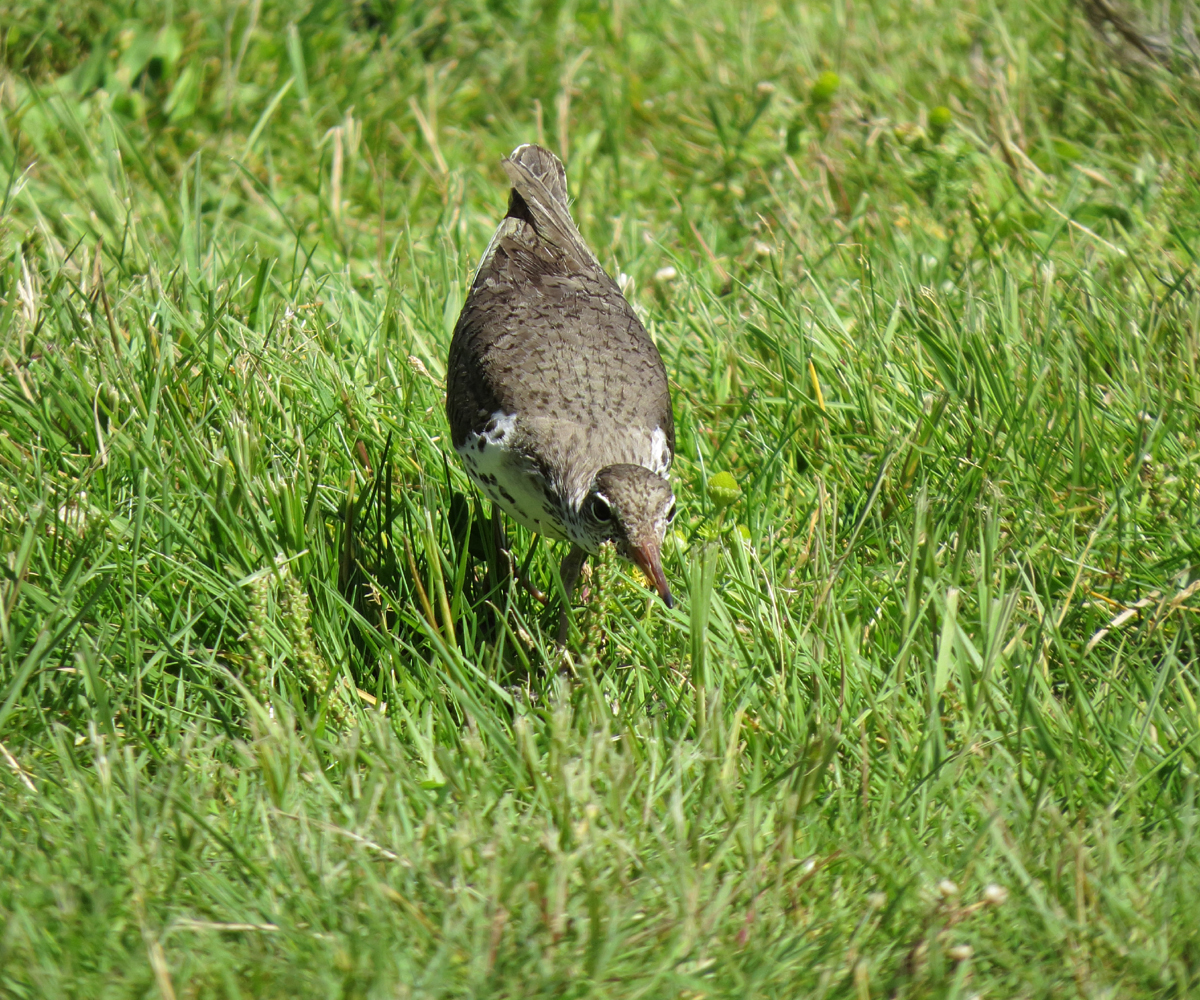 The highlight of this visit was watching this Spotted Sandpiper hunting flies in the lawn. He would crouch low to approach his prey, then reach out and grab it, hitting the mark more often than not.
The highlight of this visit was watching this Spotted Sandpiper hunting flies in the lawn. He would crouch low to approach his prey, then reach out and grab it, hitting the mark more often than not.
 This little urban duck pond is surprisingly birdy, and warrants more frequent visits.
This little urban duck pond is surprisingly birdy, and warrants more frequent visits.
If you haven’t been to Fernhill Wetlands since the major renovations were completed, you should definitely check it out. There is still a fairly large lake to attract divers, but now there is also a large emergent wetland to explore.
 Brewer’s Blackbirds were holding court in the parking lot.
Brewer’s Blackbirds were holding court in the parking lot.
 The Red-winged Blackbirds are setting up their territories.
The Red-winged Blackbirds are setting up their territories.
 Tree Swallows, giving each other that “come hither” look.
Tree Swallows, giving each other that “come hither” look.
 Even though the local nesters are getting down to business, there are still plenty of wintering Cackling Geese around. These are Ridgeway’s Cackling Geese.
Even though the local nesters are getting down to business, there are still plenty of wintering Cackling Geese around. These are Ridgeway’s Cackling Geese.
 There is certainly no shortage of American Bullfrogs at Fernhill, which may explain why I didn’t find any native frogs.
There is certainly no shortage of American Bullfrogs at Fernhill, which may explain why I didn’t find any native frogs.
 The shallow waters are teaming with these minnows. I can’t tell what species they are.
The shallow waters are teaming with these minnows. I can’t tell what species they are.
 I surprised this little Northwestern Garter Snake while she was sunning herself. I saw a Common Garter later in the visit.
I surprised this little Northwestern Garter Snake while she was sunning herself. I saw a Common Garter later in the visit.
 Northwestern Garter Snake
Northwestern Garter Snake
 I made a quick visit to Tualatin River NWR in the afternoon heat. One of the main trails is closed off until this young Bald Eagle decides to leave the nest. Despite the flock of European Starlings cheering him on, he didn’t show any sign of leaving.
I made a quick visit to Tualatin River NWR in the afternoon heat. One of the main trails is closed off until this young Bald Eagle decides to leave the nest. Despite the flock of European Starlings cheering him on, he didn’t show any sign of leaving.
 I saw several pairs of Gadwall, but no ducklings yet. This male was putting on a show for his lady friend.
I saw several pairs of Gadwall, but no ducklings yet. This male was putting on a show for his lady friend.
 Mallards have been out with broods for weeks now.
Mallards have been out with broods for weeks now.

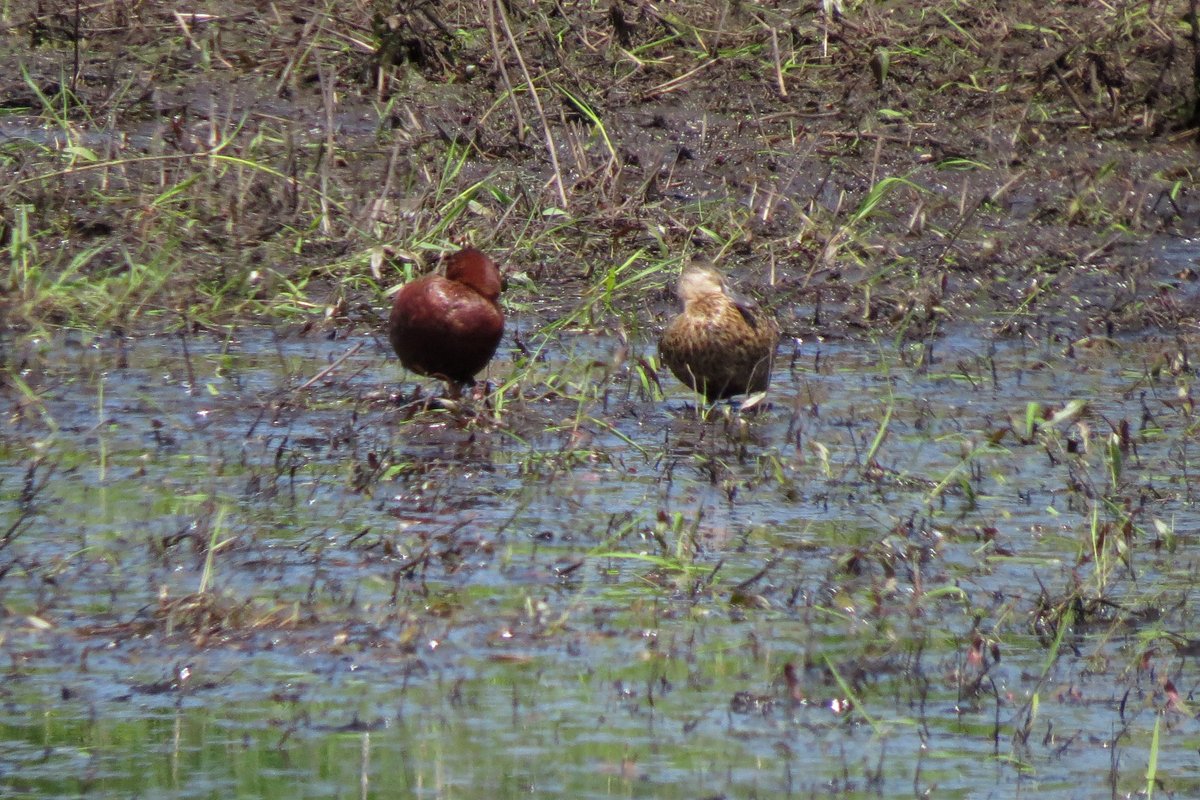 Cinnamon Teal siesta
Cinnamon Teal siesta
 Pied-billed Grebe showing off his black throat
Pied-billed Grebe showing off his black throat
 I often find Spotted Sandpipers perched on man-made structures.
I often find Spotted Sandpipers perched on man-made structures.
 Despite the time of day, American Bullfrogs were actively singing and defending territories. This introduced species is so common in the Willamette Valley. I would think they would be a favored prey item (Great Blue Heron, Mink, River Otter, etc.) but I seldom find any evidence of predation. Bullfrogs are unfortunately very good at preying on native frogs and turtles.
Despite the time of day, American Bullfrogs were actively singing and defending territories. This introduced species is so common in the Willamette Valley. I would think they would be a favored prey item (Great Blue Heron, Mink, River Otter, etc.) but I seldom find any evidence of predation. Bullfrogs are unfortunately very good at preying on native frogs and turtles.
 I spent the day on the Cimarron National Grassland in southwestern Kansas. It is a frequent destination for Kansas birders lured by the possibility of southwestern species that only make it into Kansas here. The area has seen a lot of changes in recent years. A large fire swept through the area a few years ago, killing many of the cottonwoods in the riparian corridor. The last two years have seen severe drought, followed by four inches of rain in the past several weeks. I have been visiting this area since 1984, and this is the first time I have ever seen water flowing in the Cimarron River.
I spent the day on the Cimarron National Grassland in southwestern Kansas. It is a frequent destination for Kansas birders lured by the possibility of southwestern species that only make it into Kansas here. The area has seen a lot of changes in recent years. A large fire swept through the area a few years ago, killing many of the cottonwoods in the riparian corridor. The last two years have seen severe drought, followed by four inches of rain in the past several weeks. I have been visiting this area since 1984, and this is the first time I have ever seen water flowing in the Cimarron River.
 Even during the slow birding season of late August, you can count on finding Western Kingbirds in trees and on power lines.
Even during the slow birding season of late August, you can count on finding Western Kingbirds in trees and on power lines.

 This is Point of Rocks, one of the few actual landmarks in this area.
This is Point of Rocks, one of the few actual landmarks in this area.
 This is the view from the top of Point of Rocks, with the Cimarron River corridor on the left. They say you can see wagon wheel ruts from the Sante Fe Trail from here, but I’m not sure which tracks were made by wagons and which were made by pickup trucks. Birding is usually slow here, but sometimes the brushy slopes attract interesting migrants, and raptors often fly by at eye level.
This is the view from the top of Point of Rocks, with the Cimarron River corridor on the left. They say you can see wagon wheel ruts from the Sante Fe Trail from here, but I’m not sure which tracks were made by wagons and which were made by pickup trucks. Birding is usually slow here, but sometimes the brushy slopes attract interesting migrants, and raptors often fly by at eye level.
 No matter how slow the birding, you can always find a Rock Wren or two at Point of Rocks.
No matter how slow the birding, you can always find a Rock Wren or two at Point of Rocks.
 While it may look like rock, this bluff above the Cimarron River is made of sand.
While it may look like rock, this bluff above the Cimarron River is made of sand.
 Despite the dry climate, there are a few ponds on the grasslands. This American Bullfrog looked especially alert.
Despite the dry climate, there are a few ponds on the grasslands. This American Bullfrog looked especially alert.
 There are lots of youngsters in the wetlands these days. We haven’t had any rain in July, so water levels are dropping, concentrating wetland animals into smaller areas. This is a Spotted Sandpiper in that awkward adolescent stage.
There are lots of youngsters in the wetlands these days. We haven’t had any rain in July, so water levels are dropping, concentrating wetland animals into smaller areas. This is a Spotted Sandpiper in that awkward adolescent stage.
 The same Spotted Sandpiper, peeking out of a culvert
The same Spotted Sandpiper, peeking out of a culvert
 This adult Spotted Sandpiper may be the parent of the juvenile pictured above. Like many birders, she assumes the sign does not apply to her.
This adult Spotted Sandpiper may be the parent of the juvenile pictured above. Like many birders, she assumes the sign does not apply to her.

 This young Pied-billed Grebe was grooming and stretching in the canal.
This young Pied-billed Grebe was grooming and stretching in the canal.


 There are lots of tadpoles in the canal.
There are lots of tadpoles in the canal.
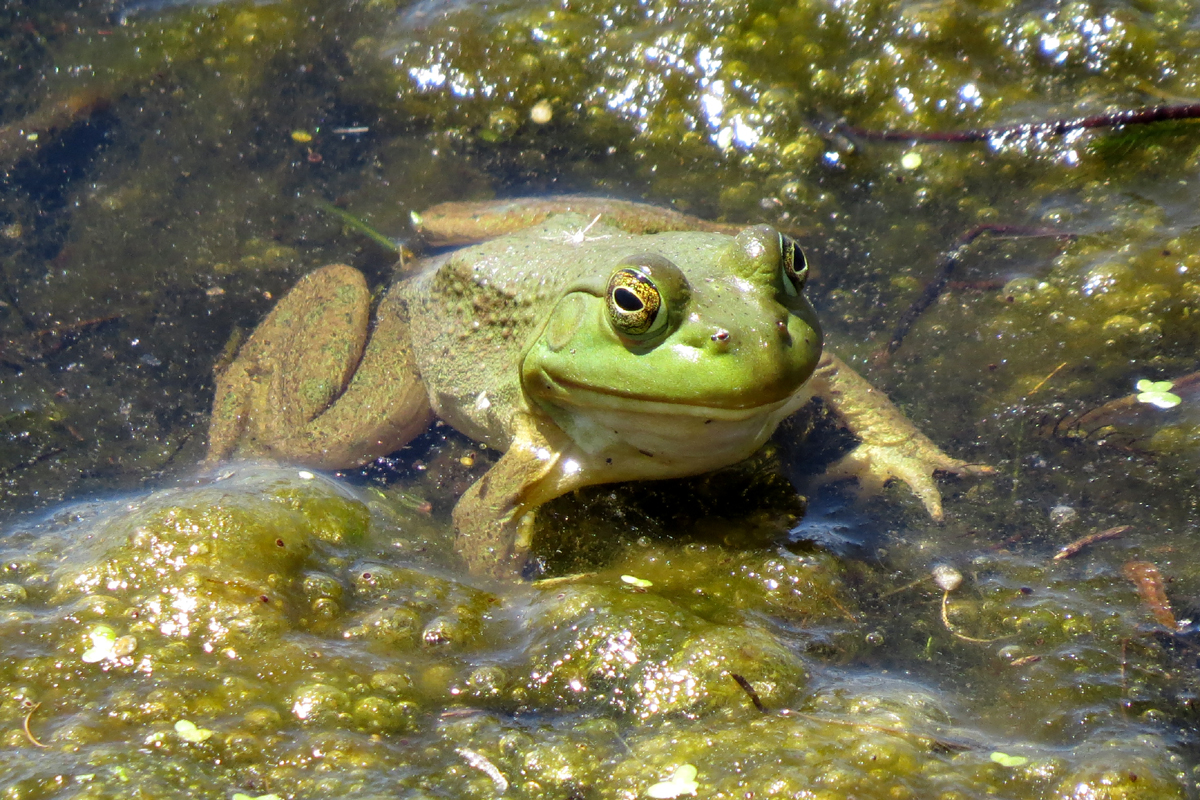 Unfortunately, they belong to the invasive American Bullfrog.
Unfortunately, they belong to the invasive American Bullfrog.
 Every puddle has a school of baby bullheads this time of year.
Every puddle has a school of baby bullheads this time of year.

 Another invasive species, but darned cute, is this young Nutria nibbling on aquatic vegetation.
Another invasive species, but darned cute, is this young Nutria nibbling on aquatic vegetation.

 I spent last week in Maine, around Bangor and the central coast. The weather went from hot and muggy to cold and rainy, which might have to contributed to the overall poor birding compared to previous visits. I did see two lifers, one on the first day (Saltmarsh Sharp-tailed Sparrow) and one on the last (Great Cormorant). It is always nice to see some eastern warblers, like this Blackburnian.
I spent last week in Maine, around Bangor and the central coast. The weather went from hot and muggy to cold and rainy, which might have to contributed to the overall poor birding compared to previous visits. I did see two lifers, one on the first day (Saltmarsh Sharp-tailed Sparrow) and one on the last (Great Cormorant). It is always nice to see some eastern warblers, like this Blackburnian.
 Eastern Phoebe, Mount Desert Island
Eastern Phoebe, Mount Desert Island
 Great Black-backed Gulls, Schoodic Point
Great Black-backed Gulls, Schoodic Point
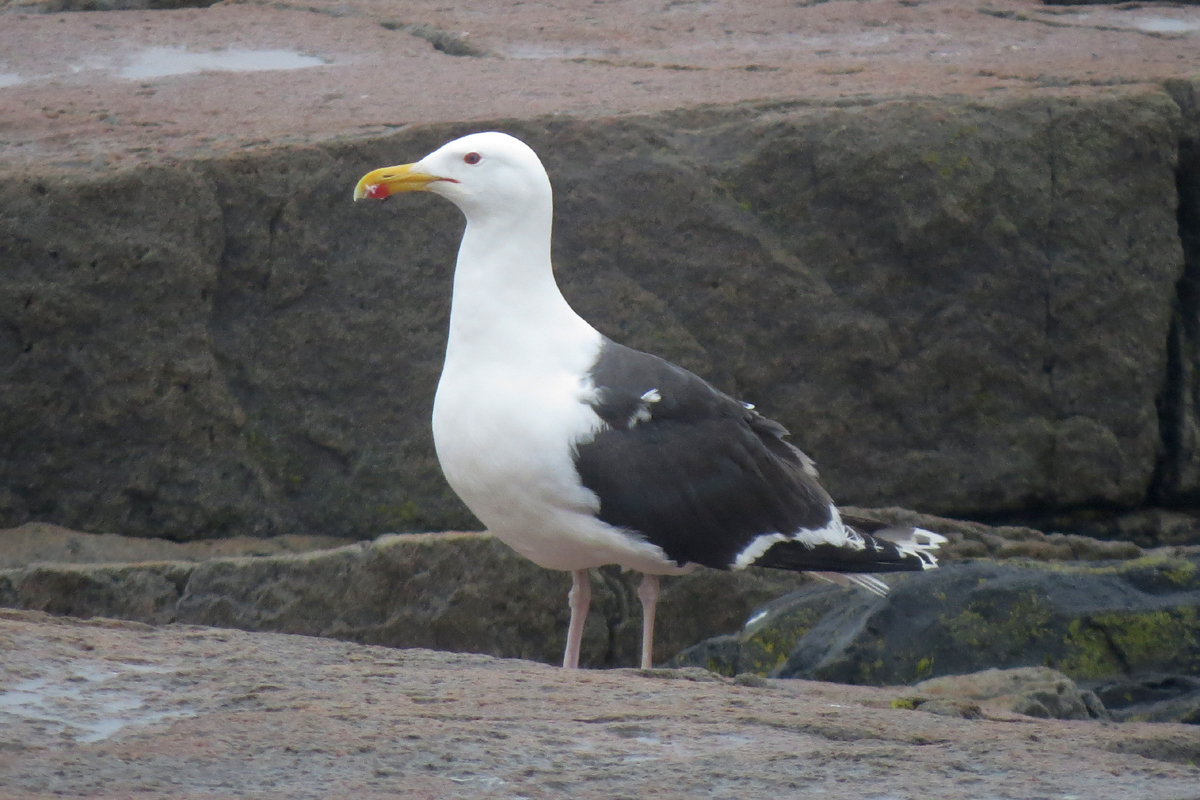 Great Black-backed Gulls in this area are rather shy, perhaps because biologists have been “discouraging” them from hunting on the offshore tern nesting colonies. The gulls do not allow a close approach and quickly take off if you point a camera at them.
Great Black-backed Gulls in this area are rather shy, perhaps because biologists have been “discouraging” them from hunting on the offshore tern nesting colonies. The gulls do not allow a close approach and quickly take off if you point a camera at them.
 The Herring Gulls are happy to pose for mug shots.
The Herring Gulls are happy to pose for mug shots.
 Great Shearwater, Gulf of Maine
Great Shearwater, Gulf of Maine
 Great Cormorant, Schoodic Point, way out there, in the rain, but he still counts.
Great Cormorant, Schoodic Point, way out there, in the rain, but he still counts.
 American Bullfrogs are an invasive species here in Oregon, so it was nice to see them in their natural range.
American Bullfrogs are an invasive species here in Oregon, so it was nice to see them in their natural range.
 This dragonfly species was common in wooded areas, where they blended in with the tree trunks.
This dragonfly species was common in wooded areas, where they blended in with the tree trunks.
 This more colorful species was at the edge of a meadow.
This more colorful species was at the edge of a meadow.
 Spotted Sandpiper, Petit Manan NWR
Spotted Sandpiper, Petit Manan NWR